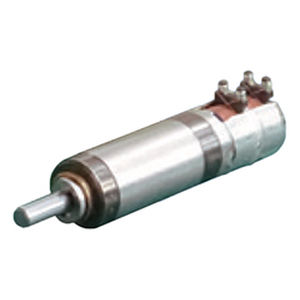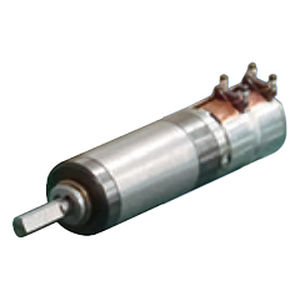
- Power Transmission - Mechanical components
- Motor and Motor Control
- DC motor
- MinebeaMitsumi Technology Center Europe GmbH
- Products
- Catalogs
- News & Trends
- Exhibitions
DC motor BLDC FDB SP2Bbrushless5 Vhigh-efficiency




Add to favorites
Compare this product
Characteristics
- AC/DC
- DC
- Type
- brushless
- Voltage
- 5 V
- Other characteristics
- high-efficiency, low-noise, high-speed, low-vibration, high-precision
- Rotational speed
15,000 rpm
(94,247.78 rad.min-1)
Description
FDB Technology
The BLDC FDB SP2B motor combines experience and know-how with maximum precision. It connects the advantages of a brushless DC motor with the advanced technology of a fluid dynamic motor. FDB stands for Fluid Dynamic Bearing. In addition to the high speeds, low vibration and long life expectancy, the FDB motor impresses with numerous other advantages. Especially in the areas of "3D Laser Scanning", "LiDAR" and "Virtual Reality - Laser Tracking Scanner", the motor with its hydrodynamic bearing system is the right choice for high-precision applications.
The mixture of BLDC and FDB
A BLDC motor is commutated brushless and therefore electronically. There is no need for brushes as the torque is a function of the electronic action of the brushless motor on the commutator. This means that a brushless motor has fewer components that can wear out, which makes it more durable and reliable.
The BLDC motor offers numerous additional advantages:
- high efficiency
- extremely quiet running and ultimate life expectancy due to the brushless technology
- optimized electromagnetic design against vibration, noise and jitter
- no wear parts
What is hidden behind the FDB motor?
The FDB motor was originally designed to meet the high-precision mechanical requirements and long life required by the hard disk market. The fluid dynamic bearing eliminates the limited precision of the ball bearings, minimizes the non-repeatable impact and reduces the acoustic noise level. As a result, the FDB motor offers superior reliability.
Catalogs
No catalogs are available for this product.
See all of MinebeaMitsumi Technology Center Europe GmbH‘s catalogsOther MinebeaMitsumi Technology Center Europe GmbH products
Drive Systems
Related Searches
- Electromotor
- Direct current motor
- Synchronous motor
- BLDC motor
- Motor for industrial applications
- High-efficiency motor
- Permanent magnet motor
- Compact motor
- Pump motor
- High-torque motor
- Stepper motor
- Brushed motor
- Medical equipment motor
- High-speed motor
- Low-vibration motor
- Integrated-drive motor
- Precision motor
- High-precision motor
- 3 V motor
- Motor for medical applications
*Prices are pre-tax. They exclude delivery charges and customs duties and do not include additional charges for installation or activation options. Prices are indicative only and may vary by country, with changes to the cost of raw materials and exchange rates.










